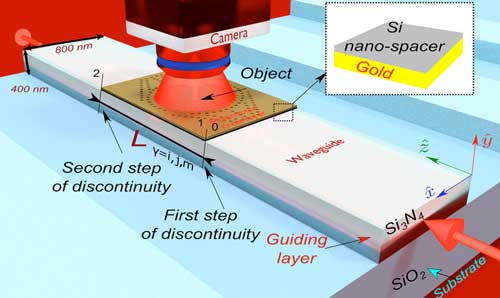| Posted: Nov 13, 2017 |
Researchers camouflage an optical chip rendering it invisible
(Nanowerk News) Ben-Gurion University of the Negev (BGU) researchers have achieved a breakthrough in manipulating light to render an object, such as an optical chip, invisible.
|
|
According to the recent study published in Scientific Reports ("Invisibility Cloaking Scheme by Evanescent Fields Distortion on Composite Plasmonic Waveguides with Si Nano-Spacer"), the researchers conceived a new method that deflects and scatters light away from a "cloaking" chip surface so it is not detected.
|
 |
| Illustration of the composite plasmonic waveguide structure and materials to study the invisibility cloaking scheme. (© Nature)
|
|
An operational cloaking chip can be an extension of the basic technologies such as radar-absorbing dark paint used on stealth aircraft, local optical camouflage, surface cooling to minimize electromagnetic infrared emissions, or electromagnetic wave scattering.
|
|
"These results open the door to new integrated photonic devices, harnessing electromagnetic fields of light at nanoscale for a variety of applications from on-chip optical devices to all-optical processing," says Dr. Alina Karabchevsky, head of BGU's Light-on-a-Chip Group and a member of the BGU Unit of Electro-Optical Engineering and the Ilse Katz Institute for Nanoscale Science and Technology. "We showed that it is possible to bend the light around an object located on the cloak on an optical chip. The light does not interact with the object, thus resulting in the object's invisibility."
|
|
The next step is for researchers to overcome the significant challenge of developing a prototype.
|

